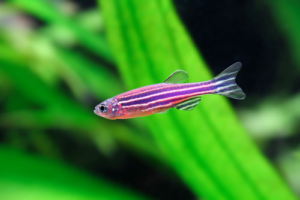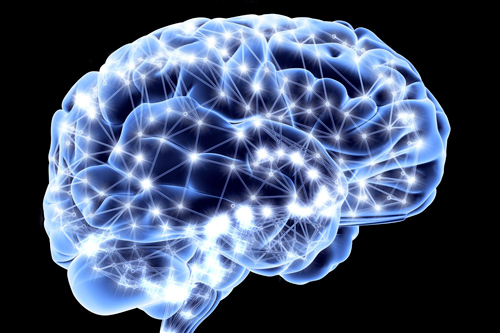 A key function of our brain is to process sensory stimuli and direct behavior in response to those stimuli. We touch something hot and our brain instructs us to pull our hand away. We hear a loud noise and we cover our ears. Equally important, we remember what hurts us so we can avoid exposure in the future.
A key function of our brain is to process sensory stimuli and direct behavior in response to those stimuli. We touch something hot and our brain instructs us to pull our hand away. We hear a loud noise and we cover our ears. Equally important, we remember what hurts us so we can avoid exposure in the future.
By connecting sensations from the outside world to information in the brain on the current state of hunger, fear, and other stresses, the habenula plays a key role in determining behavior. And it keeps working after the stimuli have stopped coming in to make sure the right information goes to the right place.
By connecting sensations from the outside world to information in the brain on the current state of hunger, fear, and other stresses, the habenula plays a key role in determining behavior. And it keeps working after the stimuli have stopped coming in to make sure the right information goes to the right place. A research team at Neuro-Electronics Research Flanders in Belgium studying zebrafish (whose primitive brains reveal surprising insights about the human brain—see sidebar) found that the upper surface of the habenula remains active even when there is no sensory stimulation. Reporting in Current Biology, the researchers noted that this spontaneous activity plays a key role in determining a response to incoming stimuli such as odor.
Recognition of the habenula’s role in decision-making capability was further demonstrated recently by scientists at the University of British Columbia in a study reported in Nature Neuroscience. The researchers presented rats with a choice between a large amount of food (two food pellets) or a small amount (one pellet) after either a short or long wait. The rodents exhibited consistent decision making (choosing the larger amount of food when the wait was short and the small amount when the wait was long). But when the experimenters blocked the signaling from the lateral habenula, the rats made their cost/reward decision randomly.
Since a malfunctioning habenula may result in increased anxiety—especially in ambiguous situations where more careful consideration of options is important—stimulating specific areas of the habenula may prove useful for treating depression and anxiety conditions, especially post-traumatic stress disorder.
Turning Fish into “Deer in the Headlights”
Interference with the habenula’s role in processing sensory information can have serious repercussions, as shown by a collaborative investigation by scientists from Duke University and the National University of Singapore. Their research, published in Current Biology, involved conditioning larval zebrafish to swim away from a light that was associated with a mild electric shock. While normal fish easily mastered this task, fish with damage to a certain set of neurons in the habenula initially avoided the shock but then seemed to give up trying. “We think that the habenula of the brain is associated with the assessment of whether a stress has been overcome,” said Suresh Jesuthasan, Ph.D., the lead investigator. “Our study provides one possible explanation as to why the need to control the environment is such a critical component of human behavior—the feeling of control enables organisms to deal with stress.” The damaged fish also were more easily startled by other stimuli that presented no danger, making them more likely to experience anxiety in general.

Other scientists at the Riken Brain Science Institute in Saitama, Japan, used fluorescent tracers to identify a pathway connecting the habenula in the zebrafish to another part of the brain that appears to correspond to a mammalian brain area that regulates fear behaviors. One group of these fish was genetically altered to close this pathway, then their response to a fear-conditioning task was compared to the response of normal fish. While the normal zebrafish learned to flee at the sight of a red light paired with an electric shock, the mutated group froze when the light appeared, unable to take evasive action.
Since a malfunctioning habenula may result in increased anxiety—especially in ambiguous situations where more careful consideration of options is important—stimulating specific areas of the habenula may prove useful for treating depression and anxiety conditions, especially post-traumatic stress disorder.
If you enjoyed reading this article, you might also like:



